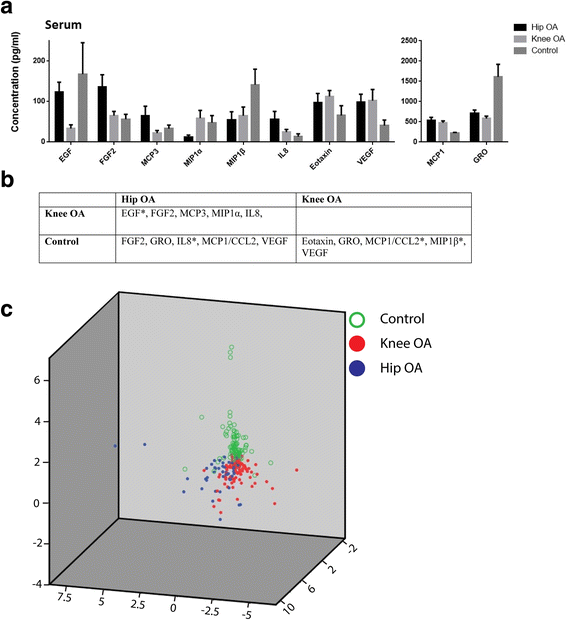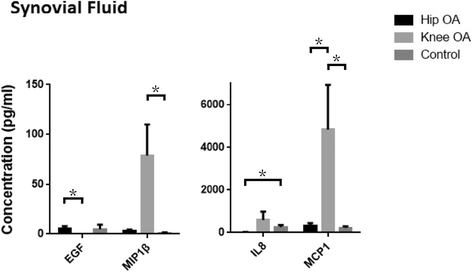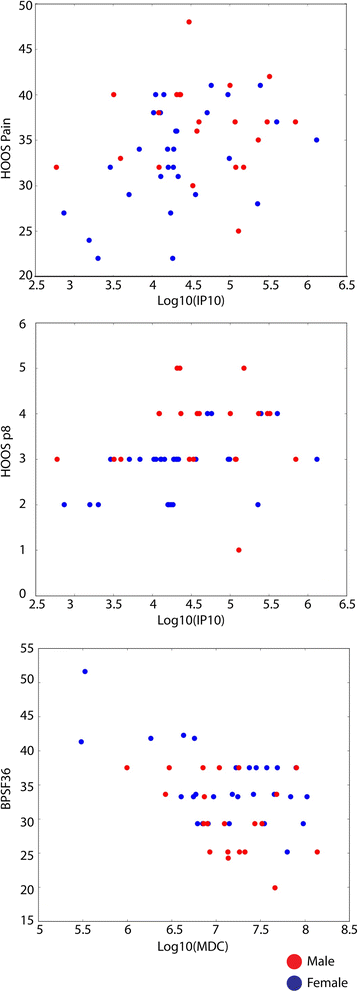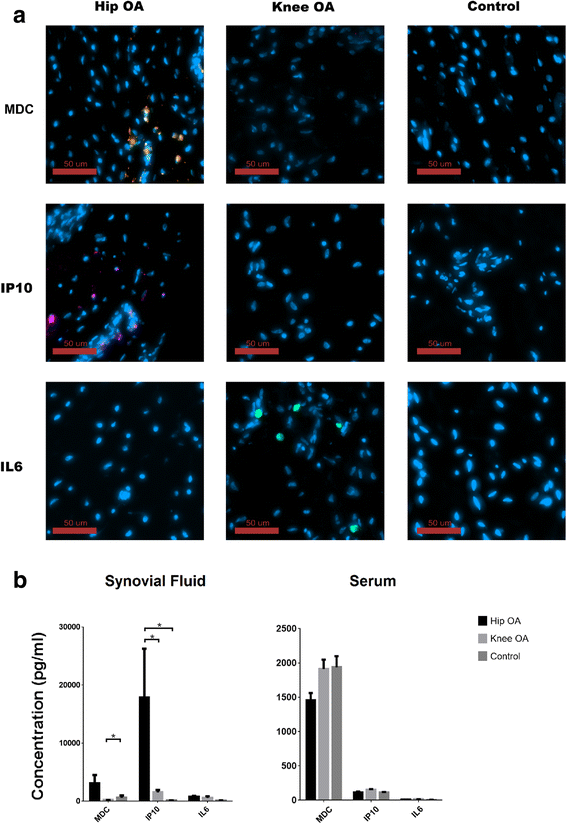Serum and synovial fluid cytokine profiling in hip osteoarthritis: distinct from knee osteoarthritis and correlated with pain
- PMID: 29402254
- PMCID: PMC5800026
- DOI: 10.1186/s12891-018-1955-4
Serum and synovial fluid cytokine profiling in hip osteoarthritis: distinct from knee osteoarthritis and correlated with pain
Abstract
Background: Inflammation is associated with the onset and progression of osteoarthritis in multiple joints. It is well known that mechanical properties differ between different joints, however, it remains unknown if the inflammatory process is similar/distinct in patients with hip vs. knee OA. Without complete understanding of the role of any specific cytokine in the inflammatory process, understanding the 'profile' of inflammation in a given patient population is an essential starting point. The aim of this study was to identify serum cytokine profiles in hip Osteoarthritis (OA), and investigate the association between cytokine concentrations and clinical measurements within this patient population and compare these findings to knee OA and healthy control cohorts.
Methods: In total, 250 serum samples (100 knee OA, 50 hip OA and 100 control) and 37 synovial fluid samples (8 knee OA, 14 hip OA and 15 control) were analyzed using a multiplex ELISA based approach. Synovial biopsies were also obtained and examined for specific cytokines. Pain, physical function and activity within the hip OA cohort were examined using the HOOS, SF-36, HHS and UCLA outcome measures.
Results: The three cohorts showed distinct serum cytokine profiles. EGF, FGF2, MCP3, MIP1α, and IL8 were differentially expressed between hip and knee OA cohorts; while FGF2, GRO, IL8, MCP1, and VEGF were differentially expressed between hip OA and control cohorts. Eotaxin, GRO, MCP1, MIP1β, VEGF were differentially expressed between knee OA and control cohorts. EGF, IL8, MCP1, MIP1β were differentially expressed in synovial fluid from a sub-set of patients from each cohort. Specifically within the hip OA cohort, IL-6, MDC and IP10 were associated with pain and were also found to be present in synovial fluid and synovial membrane (except IL-6) of patients with hip OA.
Conclusion: OA may include different inflammatory subtypes according to affected joints and distinct inflammatory processes may drive OA in these joints. IL6, MDC and IP10 are associated with hip OA pain and these proteins may be able to provide additional information regarding pain in hip OA patients.
Keywords: Hip; Inflammation; Osteoarthritis; Pain.
Conflict of interest statement
Ethics approval and consent to participate
This study protocol was approved by the University of Calgary Human Research Ethics Board (REB15–0880). Participants provided written consent. All research was performed in accordance with the Declaration of Helsinki
Consent for publication
All patient information has been de-identified.
Competing interests
Roman Krawetz is a member of the editorial board of BMC Musculoskeletal Disorders. The authors have no further conflicts of interest to disclose regarding the present study.
Publisher’s Note
Springer Nature remains neutral with regard to jurisdictional claims in published maps and institutional affiliations.
Figures




References
Publication types
MeSH terms
Substances
LinkOut - more resources
Full Text Sources
Other Literature Sources
Medical

